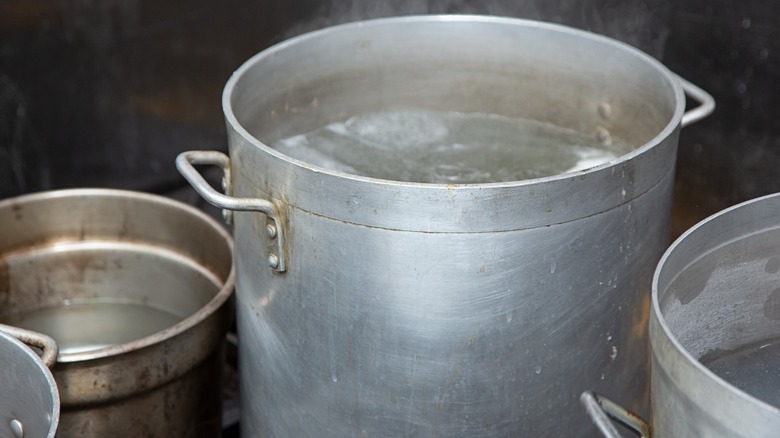Why Faitout Stockpots Are Ideal For Long-Simmering Dinners
If translated literally word-for-word in French, faitout stockpot is cook pot stockpot. It's linguistically humorous but there's a reason for it. Stockpots do have a dual purpose as being both a cooking pot and stockpot. Therefore, we need to go beyond the literal meaning in order to understand why faitout is an indicator of quality.
According to Crate & Barrel, French cookware goes hand-in-hand with their cultural philosophy surrounding food. Excellent food requires excellent tools. Purchasing French-made cookware, whether classic copper or more chic enameled cast iron, is an investment not just in money, but in commitment. Their cookware is made to last over a series of decades, as opposed to just a few years.
Stockpots present unique cooking opportunities. The vast majority are oven safe, ergonomic, come in a wide range of sizes, and retain heat extremely well, per Dalstrong. That last element, heat retention, is critical when it comes to a faitout stockpot. The ability to hold and retain heat, particularly at low temperatures, is precisely why faitout stockpots are ideal for those long-simmering dinners.
A bit of France at home
The French cookware brand Le Creuset holds a well-earned reputation for constructing kitchen tools of such long-lasting quality that their kaleidoscope of pots, pans, baking dishes, and casseroles have been handed down through generations. Their faitout stockpot is constructed with heavy gauge steel, for that all-important heat retention, and then coated in their signature colorful porcelain enamels. Though the stockpot is typically used for boiling water or making stock, the faitout pot can be used for making a variety of low-heat dishes, thanks both to the heavy-duty steel and the tight-fitting pot lid that locks in moisture. These elements are essential for a braise or roast to come out moist.
Faitout stockpots are not to be confused with Le Creuset most famous product, the Dutch Oven. According to Ceramic Cookware Review, a stockpot has a wide base and tall sides that encourages and locks in steam. A Dutch Oven, on the other hand, is a squat pan, with short, thick walls that make it ideal for a variety of different cooking methods such as frying, sautéing, searing, or baking.
Of course, there is no need to have one over the other as each has its own unique purpose in the kitchen and will serve you well for decades. However, if forced to choose, chances are you're going to get a lot more use and value out of a faitout stockpot. Honestly, the possibilities are endless.

